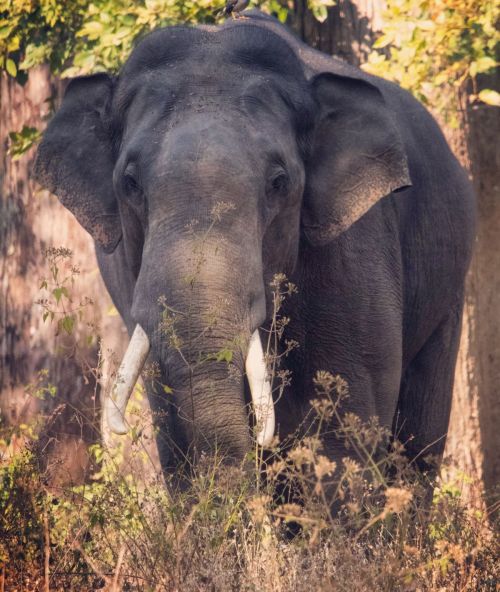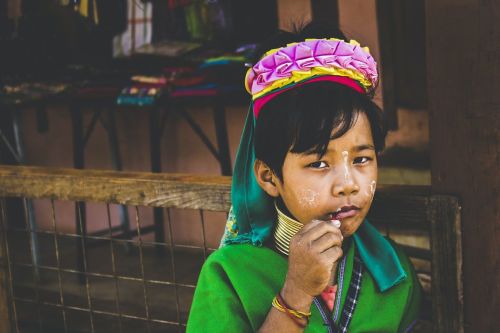Beautiful white antelope with a noble head and beautiful eyes with long, slightly curved horns. Excellently adapted to life in the desert at high temperatures and little water, they inhabited areas of western Asia in large numbers. Due to intensive hunting, they almost became extinct. Miraculously, they were saved by conservative breeding with a few remaining specimens.
The oryx is a mammal of the antelope subfamily (Antilopinae) within the bovid family (Bovidae). It includes species found in Africa and the Arabian Peninsula. Today, in addition to the Arabian oryx, the following species occur:
Images of oryxes were found in Sakkara on the facade of the burial chapel of an official of the royal office from the reign of one of the first pharaohs of the 6th dynasty Chapel is located next to the oldest pyramid in the world.
The head of the god Seth (Osiris' younger brother) was depicted as a combination of oryx, donkey and jackal.
There is evidence that the animal may have been the prototype for the ancient legend of the unicorn. The oryx antelope has a uniform white coloration and, when viewed in profile and from a distance, could be mistaken for a creature with a single horn - its two horns appear to be one.
According to another concept, if it loses one of its horns for any reason, it never grows back. In the old print "Peregrinatio in terram sanctam" from 1486, which describes a pilgrimage through Egypt and Mount Sinai to Jerusalem, there are woodcuts depicting animals encountered on the journey - crocodiles, camels and a unicorn, which is most likely an oryx.
The animal reaches a height at withers of 80 to 100 cm and a weight of 70 kg. It has a massive body, thick neck and thin, high legs. Its coat color is milky, almost luminous white, with dark spots on the head and legs and a dark, fine stripe on the side of the body. Impressive, slightly curved black horns grow from its skull, up to 60 cm long.
A short, standing mane grows from the middle of the neck.
The tail of the oryx is long and fluffy and resembles that of a horse, with the difference that the hair grows in the middle of the tail. The beautiful eyes of the oryx have inspired many poets of the Arab world.
Their foraging grounds include rocky deserts and rocky sandy areas, sand dunes, and barren steppes. They are diurnal and usually live in herds of up to a dozen animals.
In the fight against wolves, oryxes are favored by the difficult living conditions.
They feed mainly on grass, but also on fruits, tubers, shoots, buds of other plants, roots and herbs.
They can endure prolonged droughts, very high temperatures, and strong winds. They can survive droughts lasting up to 6 months (for comparison, a camel can go about 2 weeks without water). They are able to satisfy their needs by licking the dew from the fur of the animals in their herd.
When the temperature rises above 40 °C (104 °F), the oryx does not sweat or lose moisture to cool itself. Its body temperature rises above 45 °C (113 °F), and its brain is cooled by blood flowing through a network of blood vessels (rete mirabile), forming a kind of autocooler. In addition, the oryx can control the function of the kidneys.
Oryxes have an uncanny ability to detect moisture. If they detect that there is a reservoir nearby, they can walk several miles toward it. When they recognize that precipitation is imminent in an area, they move there. They are most active in the morning and hide in the shade during the day.
In each herd there is a dominant male and other immature males and females. Within the herd, oryxes behave peacefully, but this is not true during the mating season, which lasts from May to December. During this time, duels for the female often occur. The fights are fought with the horns - they rarely end in blood.
Oryxes reach sexual maturity at the age of 2.5 to 3.5 years and live up to more than 20 years.
For centuries, oryxes were part of the environment that ensured the survival of the indigenous population for centuries.
They were used to a limited extent - only occasionally hunted by Bedouins - so their population remained stable.
Oryxes were hunted extensively for their meat and as trophies. In the 1930s, oryx hunting with motorized vehicles was a popular pastime of wealthy Arab princes.
The construction of new roads enabled hunters to reach previously inaccessible areas, and hunting weapons also became more advanced - directly from the car, a hunter could kill several oryx at once.
Overgrazing of the oryx's natural habitat and trapping of oryx for private collections also contributed to the extinction of the species. As a result, by 1930 there were no oryx antelope left in the territory of present-day Israel.
In 1962, the International Union for Conservation of Nature, the World Wildlife Fund, and others proposed a plan to save the oryx. The plan was called "Oryx" The Los Angeles and Phoenix zoos established what became known as the "World Herd" of nine oryx antelope captured in the Arabian desert of Rub al-Khali and several others from Saudi Arabia, Kuwait and the London Zoo, and began a breeding program.
The breeding was successful, and the oryxes were sent to other zoos where they were also bred. Thus, new breeding groups were established on the Arabian Peninsula.
The Arabian oryx has been reintroduced in Oman, Israel, the United Arab Emirates, Syria, Jordan, Qatar, and Bahrain. Currently, there are breeding groups of this oryx species in Jordan, the United Arab Emirates and Israel.
The total population of the species has already exceeded 2,000, and the extinction of the Arabian oryx as a species is no longer a given. In addition, there are about 6,000 animals living in captivity.
At Riyadh Zoo, three adult males are kept indoors and are only allowed outdoors during the mating season. It has been observed that when zoo staff show up, for example to clean the enclosure or deposit food, the male oryx immediately goes there with clearly aggressive intentions.
This behaviour of oryxes makes it difficult to keep large numbers of them in a confined area of the zoo, and keeping males indoors without direct sunlight is not beneficial to these animals. For these reasons, research centres generally refrain from keeping adult males and perform artificial insemination of females. At the same time, it has been noted that males in large areas, when kept in a herd, generally do not attack humans.
Inscription on the World Heritage List UNESCO comes with certain obligations for the requesting state. UNESCO reserves the right to remove a site from the list if these commitments have not been met or the site has lost its value.
This right was first exercised in 2007, in the case of the Arabian oryx reserve, following the decision of the Omani authorities to reduce the area of the reserve by 90 percent. In addition, the Arabian oryx population in the area had declined from 450 to 65 animals, indicating inadequate management of the area by the local authorities.













